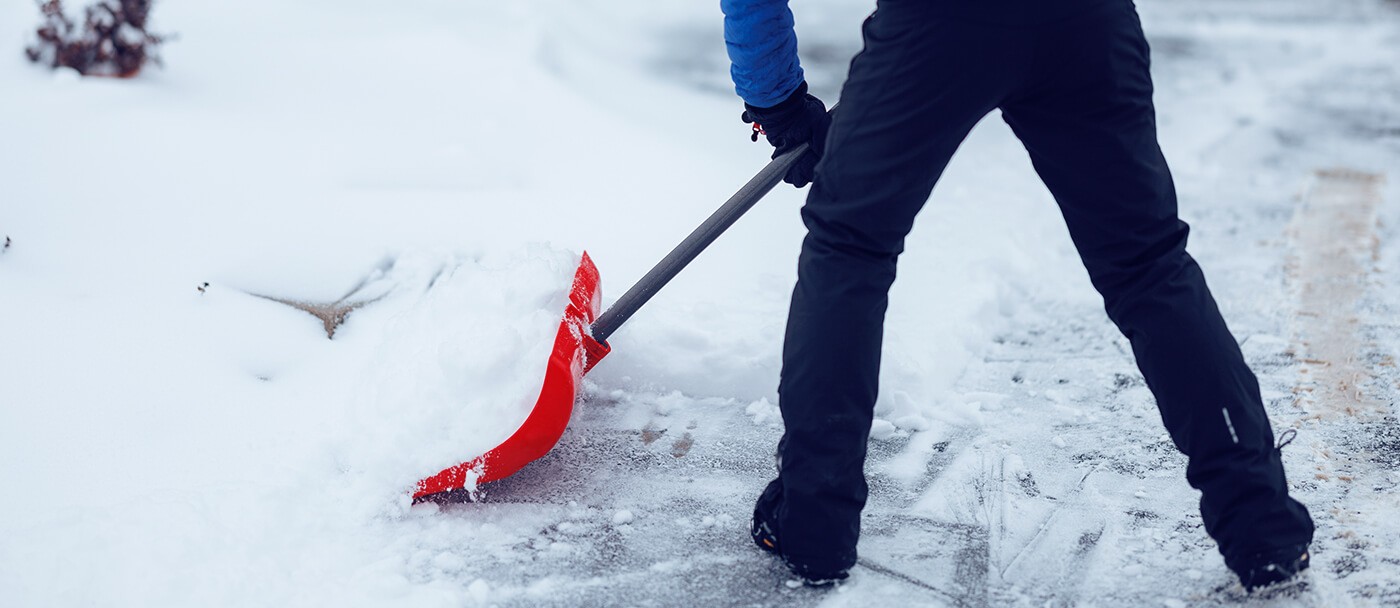Explaining ice melters

Sometimes, when you are looking out the window in the wintertime, the view will offer you a pleasing snowy scene. But once outside, winter brings a slippery companion: ice. It clings to our windshields and coats our steps, sidewalks and driveways. Ice serves as a general hindrance in our daily life during the coldest months of the year.
Consider that icy surfaces are the cause of thousands of human injuries each year. Most falls happen at home, and last year in Canada, over 114,000 falls occurred at home that resulted in ER visits. Falls on ice were the cause of almost 8,800 injuries.
Priority number one should be safety. Keeping steps, walkways and common areas clear and safe is an absolute must. The approach should be a combination of pre-storm treating with an ice melter, followed by shovelling/blowing and afterward a thin application of ice melter. Complete this by shovelling the resulting slush off the surfaces.
How is ice formed?
Ice forms when the temperature of water drops below its freezing point at 0 °C (32 °F). When this happens, the water molecules begin to slow down and come closer together, eventually forming a solid. When precipitation falls onto a surface that is below freezing, it freezes on contact, creating a layer of ice. This can happen with snow, sleet or freezing rain. Fresh snow can become compacted from foot or vehicle traffic and form ice. Freezing rain is particularly dangerous because it can create a thin layer of nearly invisible ice on the surface. Consider too that when temperatures fluctuate above and below freezing, any ice or snow on the surface will melt and refreeze, creating a layer of ice.
Breaking the ice
Rock salt and ice melter products interact with water and ice to form a heat-generating slush called “liquid brine” that melts the ice. Technically, the salt itself doesn’t melt the ice, but it creates a reaction that generates heat that will melt the ice. As the liquid brine spreads out over the ice and snow, it breaks the ice bond to the surface, so it loosens it for easy removal.
Although there are dozens of different brands of ice melters available, the list of materials in common use is much shorter. Most ice melter products in the market are made up of one or more of the following: sodium chloride, magnesium chloride, calcium chloride, calcium magnesium acetate, urea or potassium chloride.
| Ingredient | Effective down to |
| Sodium chloride | -11 ˚C |
| Magnesium chloride | -25 ˚C |
| Calcium chloride | -35 ˚C |
| Calcium magnesium acetate | -10 ˚C |
| Urea | -8 ˚C |
| Potassium chloride | -12 ˚C |
Sodium chloride (rock salt) or ice melters. What’s the difference?
Rock salt (100% straight sodium chloride) is typically sold in bigger bags and is often displayed outside the store on pallets. These are the lowest cost/kg. The granules are coarser and may contain some impurities as they are processed straight out of the mine.
Rock salt does not melt ice below -11 ˚C (14 ˚F). Although being lower cost per kg, you will need to apply more, compared to ice melters, to achieve the desired melting effect.
Ice melters found in the market in jugs or bags are generally a mixture of sodium chloride blended with stronger ingredients such as magnesium chloride or calcium chloride. These added ingredients work synergistically with the sodium chloride to melt faster, and to work at lower temperatures. When temperatures fall below -11 ˚C, ice melters will be necessary, as some will melt as low as -35 ˚C.
Ice melter granules are smaller than standard rock salt, making the particles more efficient for cutting into the ice. Research confirms that smaller round granules are more effective at boring downward, which results in faster penetration and quicker breaking-up of the bond.
Some manufacturers coat the granules with enhancers to improve the final product’s results. Each blend will vary in corrosiveness, environmental impact and lowest effective melting temperature. Overall, ice melters require less material than rock salt, will penetrate the ice faster and can last longer.
Liquid ice melter is applied before snow or ice as a pre-treatment. Unlike solid ice melter, liquid ice melter is already a brine. The brine prevents snow and ice from sticking to the sidewalk or parking lot. It can also be applied after a storm.
Best ice melting practices
- Before a storm, apply a liquid ice melter to the surfaces you want to keep ice-free. This will help prevent any snow or ice from bonding to the surface. If you do not have a liquid ice melter, you could substitute with granular ice melter, but you need just a thin coating.
- After the snow event, shovel the snow off and apply ice melter evenly on the surface.
- Read the application rate on the container: putting down more does not equate to better or faster effect. Overuse can lead to the product being unnecessarily tracked into the house or spreading into your lawn and plants.
- Prompt removal of slush and residual ice melter granules is recommended to minimize any damage to concrete and tracking in the house. Scoop up any leftover dry granules and throw them in the garbage.
- Use walk-off mats both inside and outside the entrances to reduce potential of any floor or carpet staining.
Alaskan Premium Ice Melter is infused with our TrueBlue technology to increase the efficiency of the salts. It also contains one of the highest ratios of calcium chloride compared to other ice melters. Alaskan is known to penetrate ice quicker and at lower temperatures.









